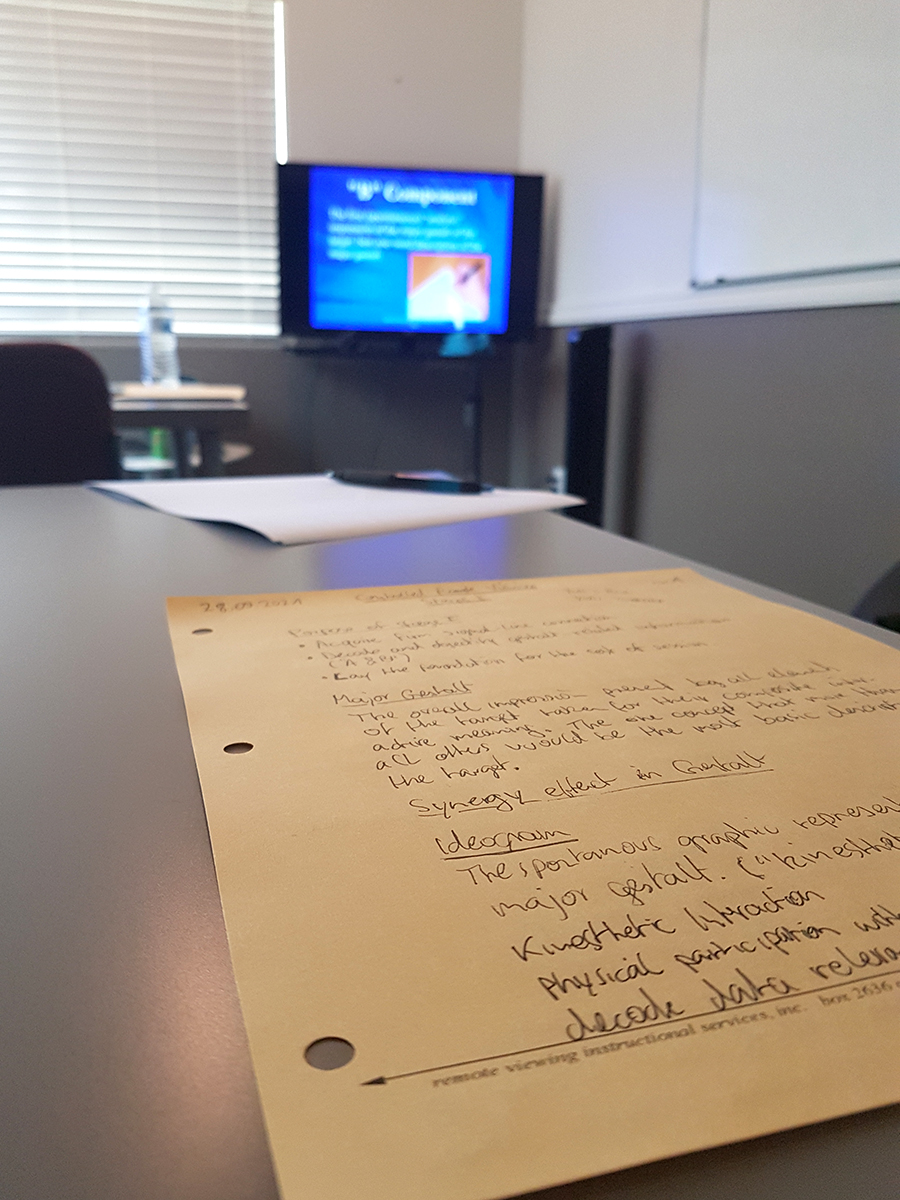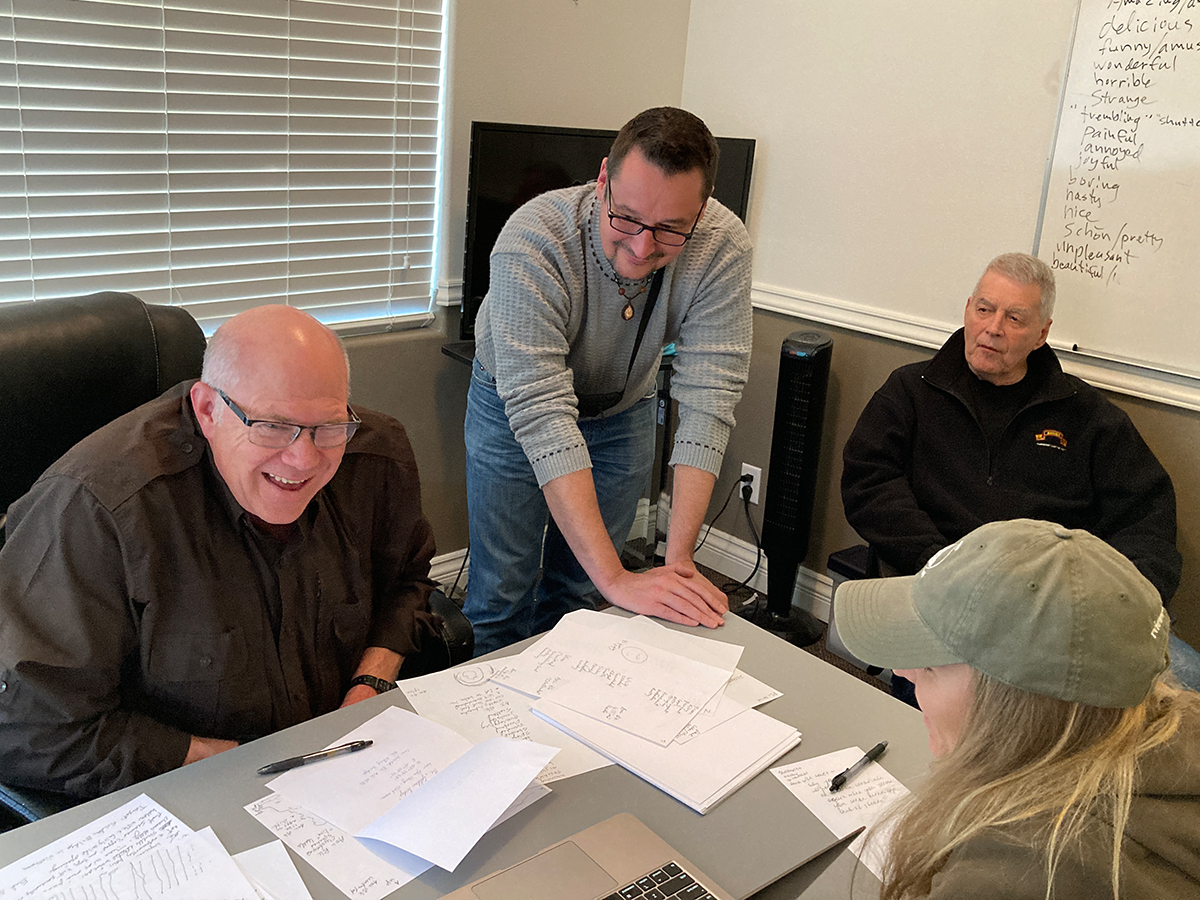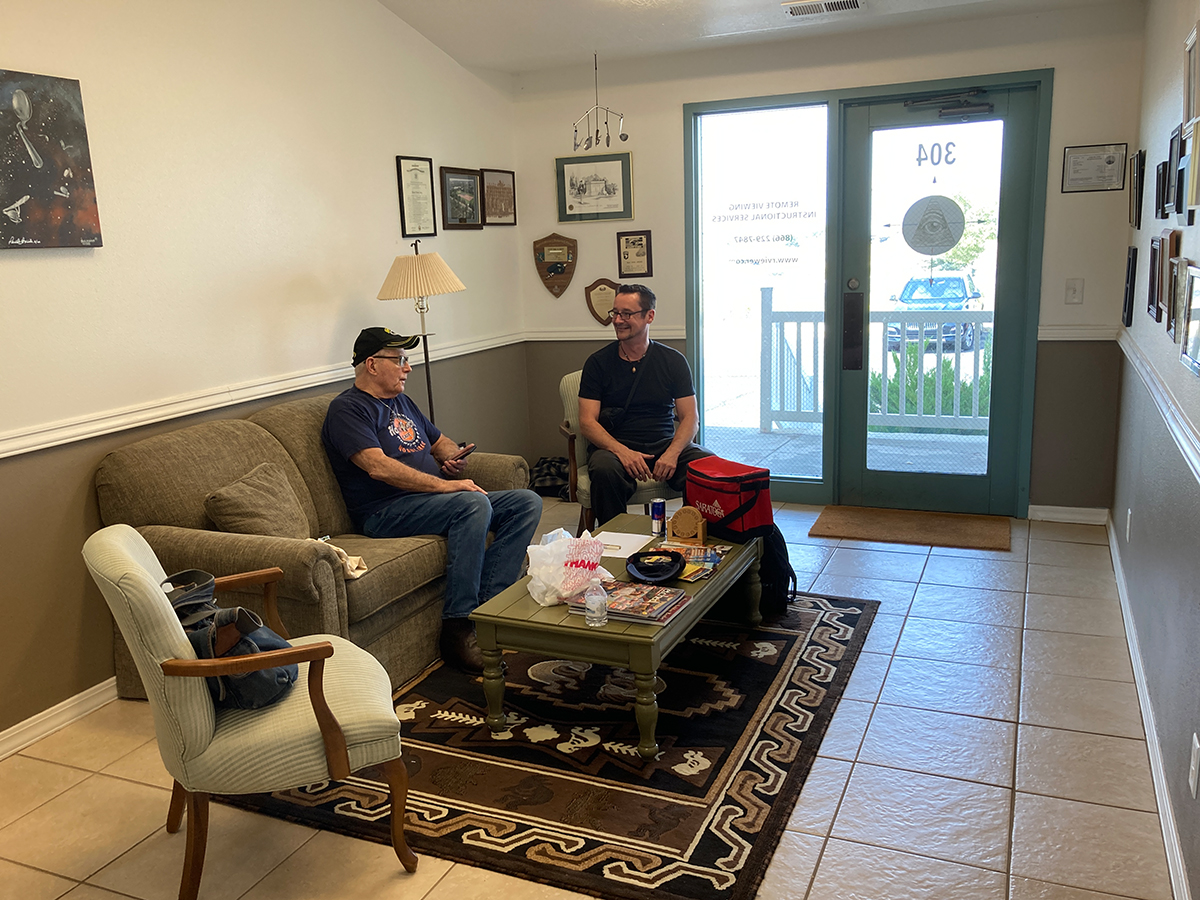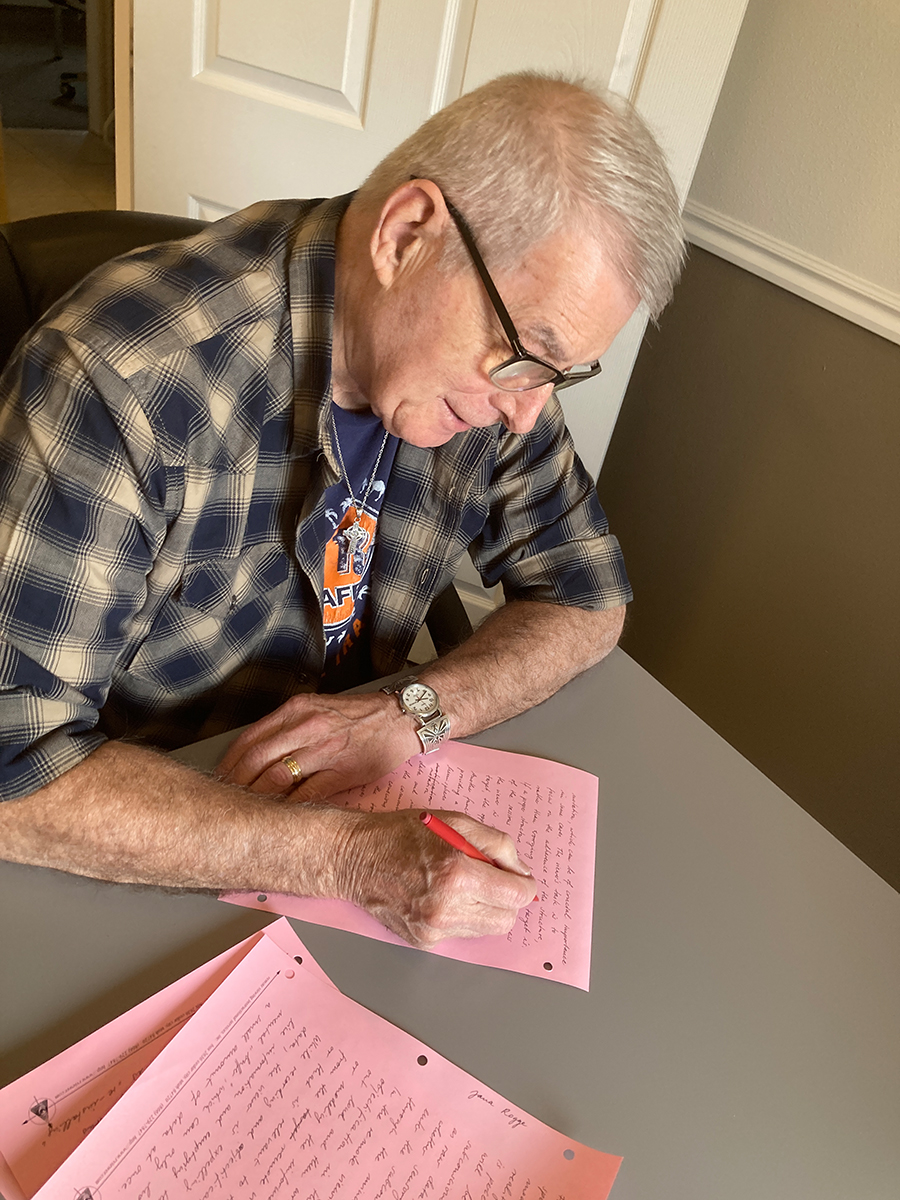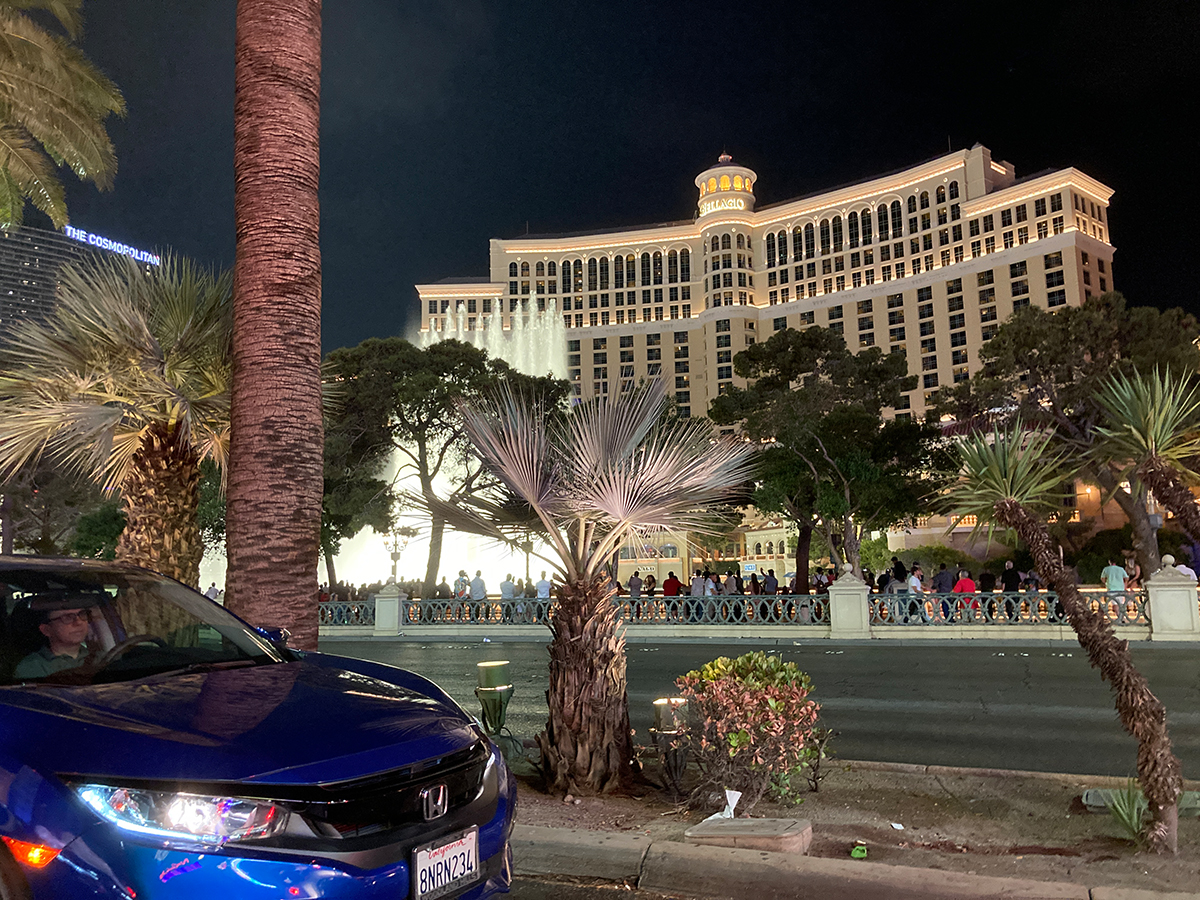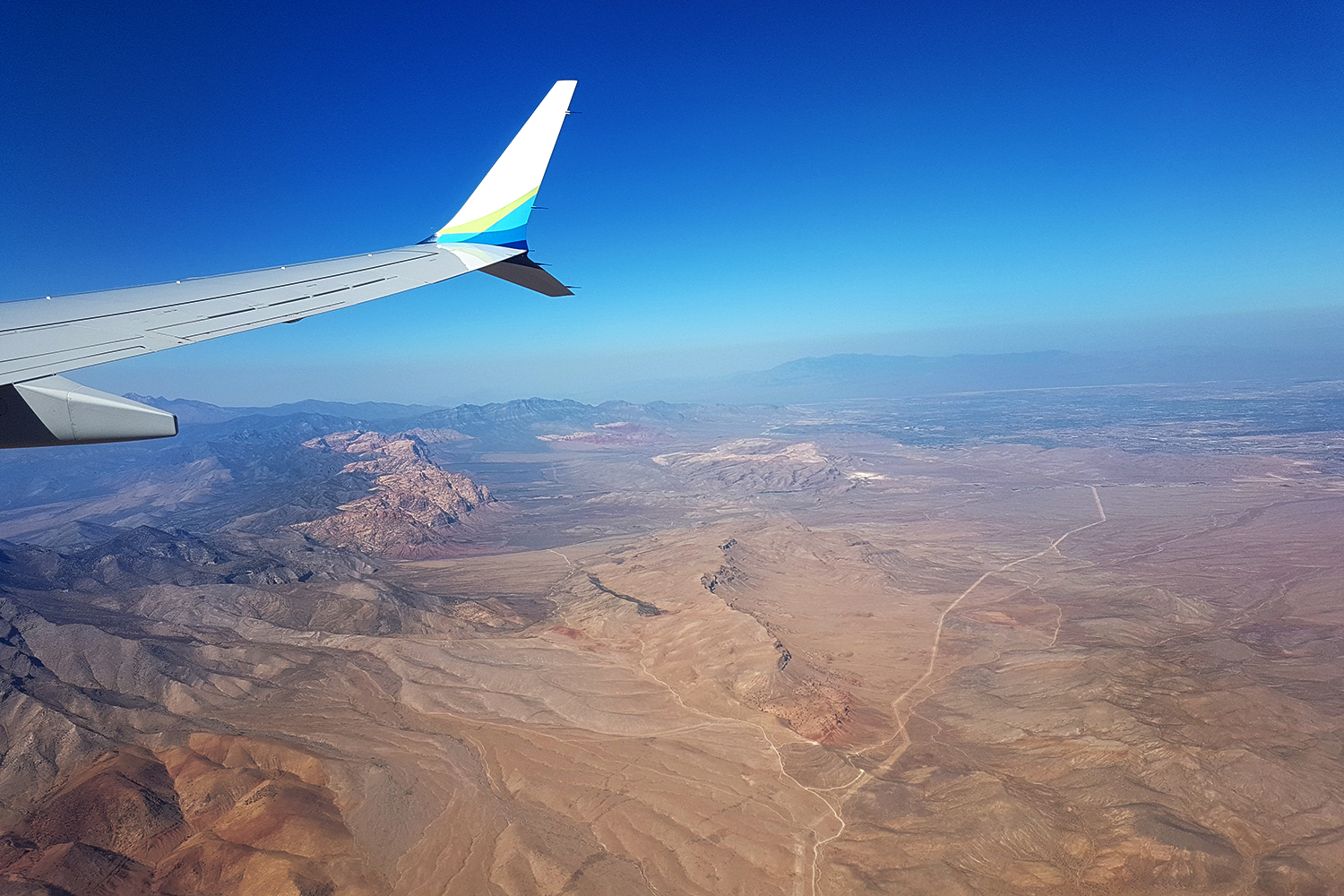Gold Standard – CRV-Training at RVIS
This is a review of our experience training with Paul H. Smith. This journey started as an adventure and stayed that way until the end: Two viewers starting on the most recent of four different remote viewing training programs—and starting once more from scratch. It was exciting, informative, adventurous – and very hard. We had high expectations and even then were surprised more than once. Now, days after returning, we are still sitting there with grins on our faces. THAT is Remote Viewing!
But in order, and with some back story….
It’s been a while since we asked Paul H. Smith for a multi-part online course on Tasking and Monitoring. At that time, we had been active for a while as remote viewers and also in the PSI unit formation, doing projects, etc. After we had dealt a lot and in detail with the history and the genesis of the protocols, for purely logical reasons our path finally led us to Paul, since he is the only one who still teaches the original, unadulterated “Ingo-CRV” nowadays. Our first experiences with him as a teacher had already inspired us very much – even if our online monitoring course could only be a limited and “toned down” preview of his actual curriculum from today’s point of view.
To teach, one needs not only one’s own understanding of the subject matter, but also teaching ability and a foundation in learning theory, otherwise much of the detailed and background knowledge one would like to impart falls by the wayside between sender and receiver.
Why was it even necessary to learn another protocol? Well, the more one studies the development of the protocol variants, the more it becomes clear how many changes and developments have been made in the last 35 years since the writing of the first manual. Some of these changes resulted from the desire to adapt the procedure more efficiently for certain questions and ways of working, some unfortunately also from the – perhaps hasty – passing on of the protocol by viewers who became teachers. The resulting „Chinese Whisper“ effect can be seen again in some of the remote viewing methods being taught today.
Fortunately, remote viewing – better perhaps “remote perception” – seems to be a very robust effect that cannot be disturbed so quickly. But there are quite a few achievements and peculiarities of the protocol, which go far beyond the representation of pure PSI abilities of humans. Our original wish was to learn as many of the individual protocol variants as possible, in order to be able to discuss the differences from our own knowledge, not just from theoretical knowledge, and to come a little closer to understanding the functionality of the protocol. What we did not expect was to be able to directly feel the steps of “evolution” within the protocols. Interestingly, we experienced just the opposite. It may be a subjective assessment, because even with the various protocols we previously learned, we always took a step back towards the base, so to speak – from the current German TRV derivative to the original TRV in the 1996 version, to the Morehouse CRV and finally now to the Ingo CRV.
We noticed quite early on that one really feels quite different as a viewer with the individual protocols. We repeatedly made this discovery again and again. No, it really doesn’t seem to have anything to do with the degree of personal experience, but with the protocols themselves.
So now we have arrived at the foundation, and from the above we can see why it turned out to be necessary to work our way through everything all over again from the beginning. Even though we have been viewing up to level 6 in the other protocols for a longer time, it was important to work out the basics again from the ground and to compare them with the information stored so far. As it turned out – important, necessary and enlightening in many areas. What is particularly exciting is that those parts of the protocol which, when seen from the outside, may seem somewhat cumbersome or awkward, are not so at all. Much more than all the variants before, this protocol is based on the natural flow of perception and free of constructions or regulations that bring the left-hemispheric processes into competition with the subconscious perception.
Here in Germany, one constantly encounters statements like “what we understand today, they didn’t know back then”, “the military protocol of that time is backward”, “that was only a first draft by Ingo, which still has to be further developed” or “back then, one needed weeks/months to learn it and today it can be done in a weekend”. And very likely this attitude of the later generations is not a purely German phenomenon, at least some statements from other countries suggest something similar. Interestingly enough, the people who claim something like this usually have no interest in thinking outside the box either. Seen from our current position and with the current knowledge, this is sad, but also somehow logical in the sense of development.
Adventure
Our trip to Cedar City, Utah, started very adventurously, because through Corona the entry conditions to the USA were bad to unclear for a long time. We had made an appointment with Paul for the end of September, and had also already booked the flight, but contrary to our expectations, the entry restrictions to the US remained in place over the months. What does a remote viewer do? That’s right, he does a session. We sent the two best viewers from our team with a tasking on the question to describe the immediate surroundings of one of us each on 25.09.2021 at 18:00 CET. Three independent sessions clearly described three times: an airplane. One can imagine that not only the viewers, but also we began to doubt when all signs continued to point against it, all attempts to get an appointment for a visa interview came to nothing, and finally, in order not to lose the money, we rebooked the flight for March with a heavy heart. We already had exciting theories and plans to investigate the possible tasking error in a trial series, when suddenly – out of the blue – an e-mail with a so-called “NIE” (National Interest Exception) appeared in the mailbox. So in no time at all, the flight was re-rebooked, the hotel and rental car were organized, and so on. The viewers were relieved. We were completely confused. Only on the plane we were sure: yes, we are really flying!
It was fun again at the visa control of the USA. We almost didn’t catch our connecting flight in Seattle because we had to talk to the border guard for so long about what was really taking us to the States. He thought a business training trip under NIE was strange, but let it stand. But what exactly are you doing? Remote Viewing training? Are you trying to pull the wool over my eyes? Our self-printed institute card was able to break the first ice. After all, the man knew the movie “Men who stare at goats”. And now he knows Paul’s website, too. We left him slightly incredulous and shaking his head, when we had to sprint across the terminal afterwards. Wouldn’t surprise us if he appears as a trainee at Paul’s someday.
Training
The first thing that comes to the mind of Paul’s former students about the training is: “It’s hard”. And right after that, “It was worth it.” Without spoiling too much (because the learning concept also requires that you don’t do some things with preparation) it can be said that the concept of written assignments and homework is challenging, but important. You learn why right away in Part 1 under the topic “Objectification”. After that, it’s still tough, but at least you know why you fall into microsleeps over the paper every night. An example: The disassembling of the I/A/B sequence and the interactive connection of the elements to each other alone takes a complete day – and is impressive.
Only superlative terms come to mind about Paul as a teacher. We have already raved about him after the online courses, but this week was really absolutely convincing in every respect. Not only was the structure of the course well thought out, but Paul has a way of speaking and presenting that is easy to follow and understand. Many facts we have heard many times before in the course of our viewing and research career, but still he managed to put everything into an overall context and to work out overarching structures for understanding that didn’t seem as clear to us before as they do now. It’s not necessarily the WHAT, but the HOW and the WHY that make the difference. Add to that Paul’s really sunny and authentic personality, for which you just have to like him.
For the lack of opportunity to see the surroundings, the exciting conversations at lunch and the field trips compensate. A little tip: Whether the hotel has a pool or not is completely irrelevant for such a week … By the way, the week is not only hard for the students, but for the teacher(s) as well. And they did much better on their feet than we did!
Paul got support, among other things, to be able to do the monitoring for two sessions at a time. Who better could we have asked for than Bill Ray of all people: He is not only the former commander of the Ft. Meade unit, but probably the most experienced monitor ever (after Skip Atwater) – and has a great sense of humor. Watching Bill and Paul together was almost like going to a comedy show at times. We remember seeing him months ago at the recording of his IRVA talk on monitoring. A distant dream at the time, and suddenly a reality. Then Bill sits in the back seat of the car during the three-hour drive from Las Vegas to Cedar City and lets us pick his brain. In terms of energy, straightforwardness and humor, Bill is and remains a great role model. His most important phrase for us: “Life is good.”
By the way, a helpful side aspect is the fact that both Paul and Bill have a pretty good skills in German language. Of course, the lessons were held spoken and in written in English, and the sessions were also viewed in English. But if a word or description was missing, we were able to help and translate quickly. Such a subtle language-competent backup is already very relieving.
Outlook
According to Paul, in his courses the rate of those who participate in the advanced courses is very similar to what other teachers in the field say. About ten percent of the participants who start with a Remote Viewing basic course come back for more advanced courses. For many, the personal experience of their own PSI abilities is enough, and they don’t feel the need to go further than basic training. When the initial enthusiasm is exhausted, what remains is mainly hard work and … practice, practice, practice. In this, Remote Viewing is basically no different from any other skill that can be learned – those who want to bring it to a certain mastery need motivation, discipline and have a long way to go.
As mentioned at the beginning, we had set out to learn various protocols so that we could decide with knowledge and understanding which way we wanted to work as viewers. All paths have automatically led us to this point, and we agree that the “Ingo-CRV”, the original Controlled Remote Viewing protocol, will be our final home. One question in Paul’s final interview was whether you wish you had done anything differently on your personal remote viewing journey. No, however, still not. The experience of the other protocols and approaches has enriched us and contributed significantly to our current understanding of the subject.
Not only did we seem to catch fire during this week, but Paul has also put aside his initial concerns about the language barrier. He has agreed to visit us in Germany probably in a few months and to hold a Basic course there according to the proven method. There would be a maximum of 4 participants, more will not be trained by him at the same time for reasons of quality. We have, without even talking about it, already received two reservations, which means two places would still be free. The exact time for the week (a course week runs from Monday to Saturday) will then be determined in consultation with all parties involved. The costs are made up of the regular course fees (www.rviewer.com) and the costs for travel and accommodation, which are shared by all participants. So all in all it is much cheaper than a trip to Utah – but we just can’t offer such spectacular mountains. If you still want to apply, please feel free to send us a short message.








